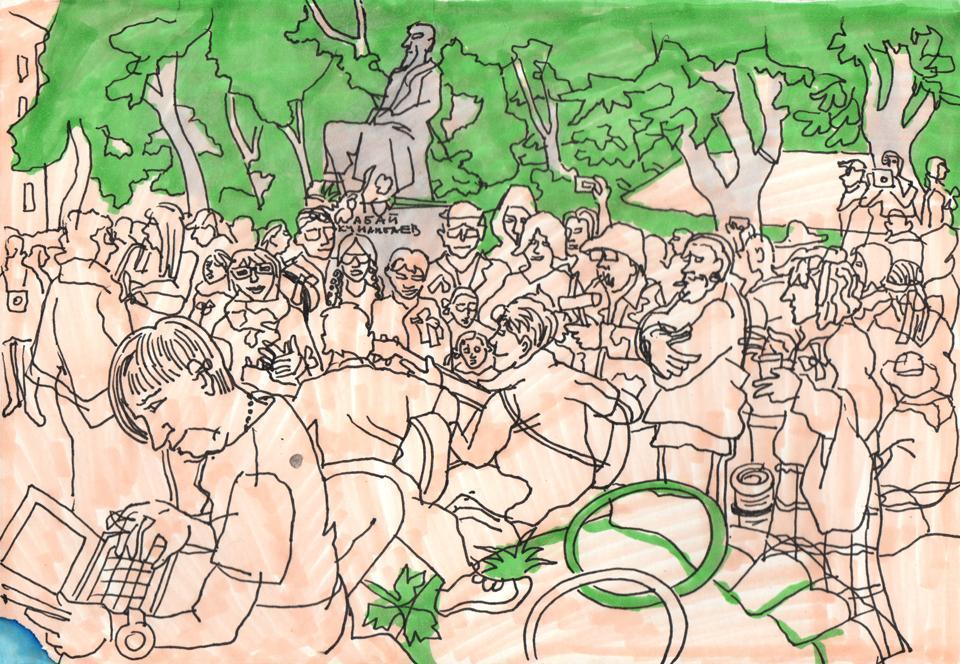Victoria Lomasko
A Chronicle of Resistance
Victoria Lomasko
A Chronicle of Resistance, 2012–2013, 27 drawings, felt tip pen on paper, 26 works in the A4 format, 1 work in the A3 format
Collection II of the Arsenal Gallery in Białystok. Work donated to the Arsenal Gallery by the artist

In 2012, Russia witnessed a wave of protests against the results of elections to the State Duma, the lower house of the federal assembly, and against Vladimir Putin’s re-election for president. Those protests are the topic of Victoria Lomasko’s Chronicle of Resistance, a series of drawings created in the heat of the moment. One of the events she documented was the week-long action “Occupy Abai”, which took place in early May 2012, after Putin’s swearing-in ceremony. A group of protesters made a street encampment in Chistoprudnyi boulevard in Moscow, close to the embassy of Kazakhstan and the monument of the Kazakh poet Abai Ibrahim Kunanbaev. Being an active participant in the protest, Lomasko created her drawings on the spot; they were later displayed in various places inside the encampment.
In her Chronicle of Resistance, Lomasko recorded several persons who were the icons of the protest, including members of the Pussy Riot group; above all, however, she focused on ordinary citizens representing various social groups. Each episode of the protest she approached in isolation, attempting to render the current atmosphere in the crowd. When drawing larger demonstrations, she carefully selected distinctive figures, expressive banners or meaningful situations, thereby creating a synthesis of the given demonstration and showing it as a process – an assembly of people and presentation of postulates that unfolded in time. Lomasko describes her work method as a pictorial reportage. She considers a drawing to be a better medium for documenting the protests than a photograph. In her view, hand-drawn lines from which the human figures and silhouettes of objects emerge are better at rendering the subjective vision of the events, the emotions by which the crowd is moved, and ultimately also the interdependencies between the image and its accompanying text.
Lomasko’s work is sometimes brought up in the context of the visual language of such artists as Joe Sacco, the Maltese-American graphic journalist, or Marjane Satrapi, the Iranian-French illustrator, cartoonist and film director. Yet it seems that the native, Russian traditions of graphic journalism, such as demobilisation albums (chronicles documenting the conscripts’ time in the army), amateur reports from the war front or accounts of prison life, would be more correct as a point of reference for Lomasko’s explorations.
Izabela Kopania
translated from Polish by Klaudyna Michałowicz

PLAN YOUR VISIT
Opening times:
Thuesday – Sunday
10:00-18:00
Last admission
to exhibition is at:
17.30